Approaching the identity of students at the First Higher School Through images and words evoked by dormitory logbooks
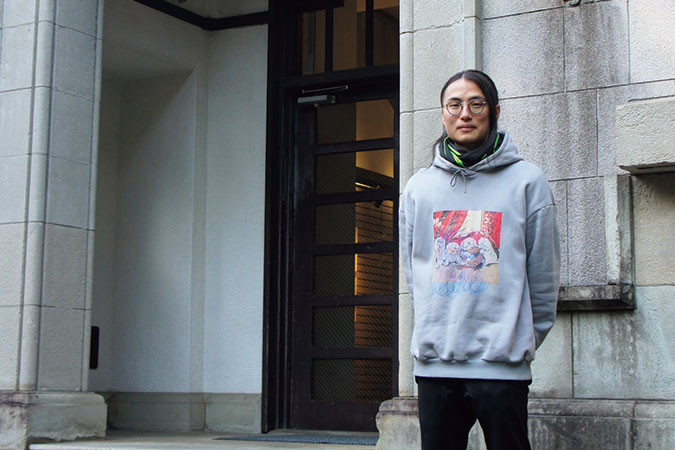
| Tansei-colored Filmmakers 3 |
Approaching the identity of students at the First Higher School through images and words evoked by dormitory logbooks
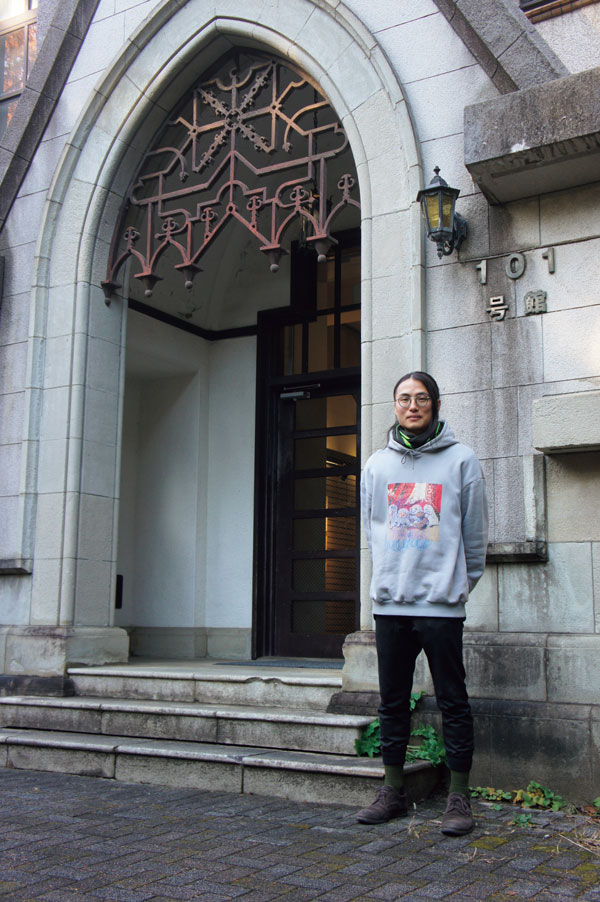
Second-year doctoral student, Graduate School of Arts and Sciences
Outside Komaba Campus Bldg. 101
Kotegawa is enrolled in the Culture and Representation Course, and many others associated with the same laboratory also took part in the making of this film.
This spring marked the release of a film titled Rojo (A Closed Off Man), a work that draws on a variety of materials to evoke the distinctive experience of communal life at the dormitory of the former First Higher School, the predecessor of the current College of Arts and Sciences. Directed by Sho Kotegawa, a graduate student, the film was produced as part of the First Higher School Archive Project being promoted by the East Asian Academy for New Liberal Arts (EAA), which is jointly run by the University of Tokyo and Peking University (China).
“Building No. 101, which houses the EAA Komaba Office, was once used as a study hall for Chinese students at the former First Higher School. A survey of related materials was carried out, with plans to exhibit the findings, but owing to the COVID-19 crisis, we were only able to stage an on-campus exhibition. This project came together out of the idea that a video might be a good way to attract a broader audience online. When I learned that they were looking for student staff, I decided to apply out of my desire to be involved in video production.”
Although Kotegawa had previously made a short film in Professor Yasuo Kobayashi’s class when he was an undergraduate student at Aoyama Gakuin University, this was the first time he had heard anything of substance about the First Higher School. It was only after reading through the project materials that he came to know about the school’s relocation from Hongo, the principle of all students living in dormitories, and the traditions of self-governance that were fostered thereby. Of particular interest for him were the dormitory logbooks.
“The logbook entries state things like, ‘Students in the dorm these days slack off, are short on enthusiasm for life and ill-mannered in their use of the dining hall.’ The detailed descriptions of the discussions that took place at the self-governance committee paint a lively picture of the students at that time, unlike the administrative documents. I thought this would make an interesting film.”
Kotegawa, who studies Russian film in the Graduate School of Arts and Sciences, opted for a style that blends documentary with fiction. While the majority of the screen time is taken up by footage of documents, he cites the influence of the director Alexander Sokurov on the narrative effect the film achieves through the appearance in the film of an unnamed graduate student researching the First Higher School. In developing the concept, particular attention was paid to language.
“The First Higher School students perused dormitory logbooks and other records, reflected on their experience in light of the ‘First Higher School spirit’ that emanated from the words written therein, and then wrote down their own lives for the sake of posterity. I believe that the First Higher School identity arose out of the cycle of applying the words that they inherited to actions in their individual cases, and then creating records to refer to once again in the future.”
As director, Kotegawa sought to render the voices of First Higher School students familiar to a contemporary audience by having the words of multiple roles delivered by students and other voice actors, including an explanatory voice that conveys the details of the materials, the introspective voice of the unnamed graduate student and the voices of others who interject with a kind of insight into the materials. After its on-campus release, the film will be submitted to international film festivals and screened at universities in Japan and overseas, including Peking University. Although the title of the film, for better or worse, is a word that symbolizes the First Higher School (the literal translation of the Japanese title is “confined”), this is nevertheless a work that aspires to go out into the world.
Rojo [A Closed Off Man]
In addition to EAA Project Assistant Professor Hanako Takayama, who served as the film’s producer, three EAA research assistants (Sho Kotegawa, co-script writer Satoshi Takahara and recorder Shuichiro Higuma) played key roles in the production of this film. Other noteworthy elements of the film include the score, arranged by composer Midori Kubota from First Higher School dormitory songs such as “Aa gyokuhai” (“Ah! Flowers in a Jade Cup”) and “Niihari” (“On the Hill of Newly Cultivated Land”), and the final shot of the underground passageway leading from the dormitory to various campus facilities.
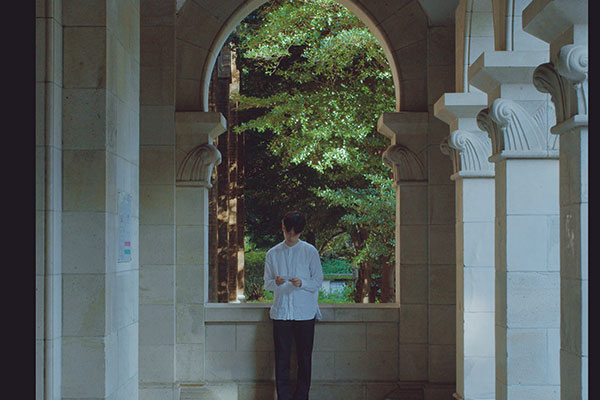
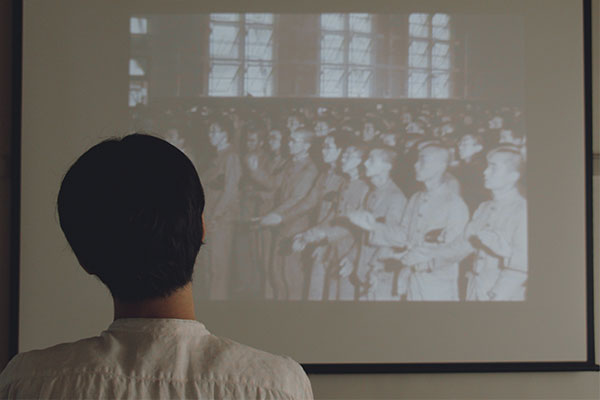
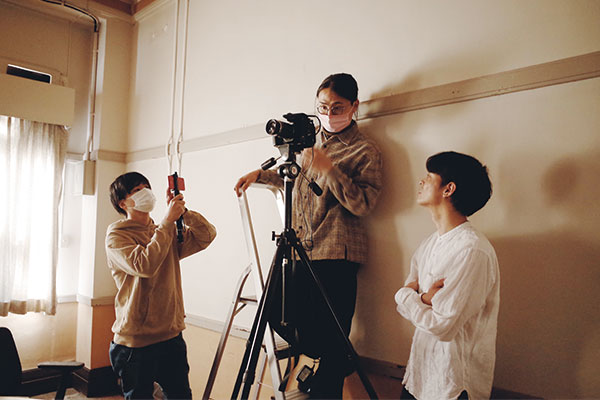
* This article was originally printed in Tansei 44 (Japanese language only). All information in this article is as of March 2022.






